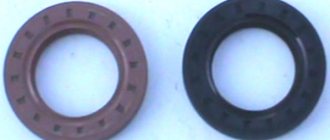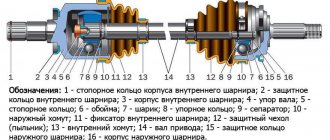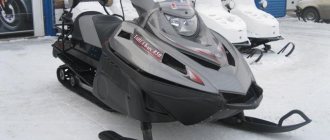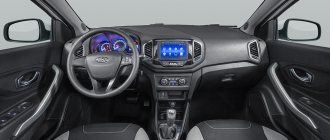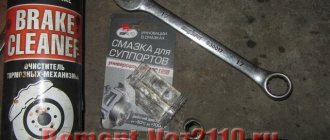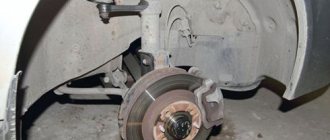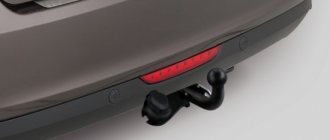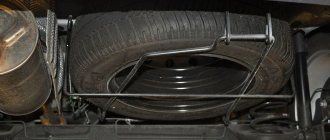Imagine the situation: when you turn the steering wheel again, suddenly a frightening metallic crunch is heard and the car does not move - the inner part of the outer CV joint has been destroyed due to the ingress of water and sand. And the culprit is a ruptured boot of the constant velocity joint. Ask yourself, when was the last time you inspected it for integrity? But automakers recommend periodic inspections of protective covers to prevent expensive repairs.
The CV joint boot is an inexpensive, quickly replaced in a car service and very important part, which, if damaged, can lead to expensive repairs and immobilization of the car. You just need to tear it slightly, and dust, salt, dirt and water immediately get inside, onto the rubbing pairs of the constant velocity joint, which lead to very rapid destruction of the moving parts. Usually the separator is destroyed, and scuffing also occurs on the cage and balls.
We decided to conduct a small test, for which we purchased 16 outer CV joint boots for front-wheel drive VAZ 2108-2170 models - two of each brand. And also, for comparison, we purchased a set of boots from a world manufacturer for a fairly common foreign car Nissan Pathfinder/Navara, similar in size to boots for Lada cars.
When purchasing, by the way, I had to deal with the peculiarities of business in Russian: almost all products do not have packaging, some manufacturers do not bother assigning company numbers or providing at least some information about the product and its manufacturer. Added to all this are incomprehensible storage conditions and transportation of these components in potato bags. And this is not a metaphor! Apparently, one of the factors in this attitude towards spare parts is their waste price. In our case, prices for outer CV joint covers for most Lada cars range from 150 to 300 rubles.
Tests
Anthers of all brands, one piece at a time, were placed in a freezer at a temperature of –40 ºС and kept for 24 hours. The anthers were then tested for fragility. All presented CV joint covers were able to pass this stage.
The second stage was lowering the temperature to –50 ºС and repeating the exposure of the products for one day. Then the anthers were taken out again and checked for fragility by attempting a sharp compression.
The corrugations of the Weber and ATP anthers crumbled at this temperature into small rubber fragments like glass. The Hofer and Trek cases, although they became very hard, did not receive any damage. The remaining samples passed the tests without consequences.
The second stage was checking the samples we purchased for resource.
The boots were lubricated with CV joint grease and installed on a special stand for accelerated life tests. The main parameter of the boot life is, in fact, the number of compression-extension cycles sustained. Therefore, the installation consists of two shafts rotating on bearings, one of which is driven by electric motors located at an angle of 45º relative to each other (requirement GOST R52924-2008). The rotation speed of the drive shaft is 1500 rpm, and knowing the wheel size for the VAZ 2108 (185/60R14), it is quite easy to calculate the expected speed of the car.
The linear speed of the wheel is determined by the formula:
ϑ=ωR, where ω – angular velocity,
which is determined by ω=2πν, where ν is the rotation frequency.
The wheel diameter size is easily calculated:
185/60R14=0.185x0.6x2+14x2.54/100=0.5776 m
The speed of linear motion will be equal to:
ϑ=3.14x1500x0.5776=45.34 m/s (163.2 km/h)
Thus, the warranty mileage of 50 thousand km on the boot stand is completed in 306 hours.
Only the BRT, ATR, Trek, Trialli anthers, as well as the NTN-SNR case, withstood the endurance tests without consequences. The rest exploded in the area of the upper corrugation.
The TSN dust bag lasted only 5 hours. Weber lasted a day. "Horse" - two. The Hofer ruptured after 91 hours of testing.
The best manufacturers of CV joint boots
Each brand has an individual list of pros and cons that affect operation, as well as customer choice.
MARUICHI
Description. The Japanese company MARUICHI is considered one of the market leaders in the field of rubber-metal parts, which includes anthers. The brand is distinguished by proven quality, which is achieved by high-tech production and the use of durable materials.
We supply boots not only to the secondary market, but also to the assembly line, which allows customers to receive similar parts for their cars.
The boot is made of a rubber mixture, which has increased resistance to mechanical loads and frost resistance.
Spare parts can withstand temperatures down to -50 °C.
Equipment. The standard equipment includes the boot itself, good quality molybdenum grease, clamps, and a retaining ring. Often the kit also includes a hub nut.
Life time. The service life exceeds 3 years, with a guaranteed service life of 1 year.
Pros of MARUICHI
- High quality combined with a low price.
- Analogue to original spare parts for Japanese cars.
- Long-term operation due to wear resistance of rubber.
- Frost resistance, which is important for northern regions.
- Good packaging and inclusion of lubricant.
Cons of MARUICHI
- Narrow clamps.
- Some models supplied to the secondary market differ from the originals, which requires the correct selection of the optimal boot.
TRACK
Description. The domestic manufacturer TREC occupies a significant segment of the anther market in Russia. This is due to the introduction of innovations in production and high-quality products that have international quality certificates, including environmental ones.
The boot is made of high-strength polyurethane, which increases service life and resistance to mechanical damage. There are several series of anthers available on the market, differing in characteristics and configuration.
Equipment. The standard kit includes a boot, clamps and lubricant. In the classic series, only the boot is supplied.
Life time. The guaranteed service life is 12 months or 40,000 km. In practice, the actual duration of operation depends on operating conditions and compliance with all rules. The boot can protect the unit for more than 5 years if treated with care and appropriate maintenance.
Pros of TRACK
- In production, thermoplastic elastomer is used, created on a polyurethane basis, which increases the strength indicators relative to rubber three times.
- Resistance to temperatures ranging from -65°C to +110°C.
- They last a long time with proper installation and maintenance.
- Good price/quality ratio combined with a large selection.
- High quality durable stainless steel clamps.
Cons of TRACK
- It is difficult to select a boot with the required dimensions for a number of foreign cars, since the products are more aimed at the domestic market.
- There may be a defective batch under this brand, so it is worth checking the place of manufacture when purchasing.
HORSE
Description. The Russian company HORS is part of a diversified holding association that supplies spare parts to the secondary market. Rubber-metal products, including anthers, are considered one of the production lines.
The boot is made of silicone with a good level of frost resistance. This allows it to be used in northern regions.
The element retains elasticity at temperatures from - 50 C to + 250 C. Wear resistance, which is achieved through high-quality silicone, is taken into account. The difference is considered to be a good level of protection against any aggressive substances.
Equipment. The kit includes clamps, the cover itself and lubricant.
Life time. The guaranteed period is 1 year, but practice shows that the service life significantly exceeds 3 years with proper installation.
Pros of HORSE
- High-quality design with a seal at the clamp attachment point, which ensures structural strength and reduces the possibility of dirt penetration.
- Heat and frost resistance.
- Possibility of installation on domestic and foreign brands of cars.
- Long service even in difficult conditions.
Cons of HORSE
- There are low-quality copies in the form of fakes. They cost less than the originals.
SWAG
Description. SWAG's enterprises are located in Germany. Boots are among the aftermarket parts that are supplied to international markets. In the manufacture of spare parts, high-quality materials with increased resistance to damage, including mechanical damage, are used.
Despite the fact that the company supplies a number of models of anthers for assembly line assembly, the quality of the originals is much higher than the parts supplied to the secondary market. The difference will be a low price segment compared to competitors with European quality certificates.
Equipment. The kit includes a cover, clamps, lubricant, and may also include a retaining ring. Each series has its own equipment.
Life time. The warranty is issued for one calendar year. The duration of actual operation depends on many factors, but the average period exceeds two years.
Pros of SWAG
- Budget option with European quality.
- Large selection of anthers for all brands of cars.
- There are models similar to original spare parts for German and Czech cars.
Cons of SWAG
- A large number of fakes.
Lemforder
Description. Lemforder is part of a large concern that plays a leading role in the production of auto parts. The silicone boot is designed for long-term use and has all European and international quality certificates.
Rubber-metal products are supplied in branded boxes and with protective logos, as the percentage of counterfeit products is high.
Spare parts are similar to the original parts that are used to assemble German and American-made cars.
The difference between the products is also considered to be the ability to choose the best option for any brand of car without loss of service life.
Equipment. The kit includes clamps, boot and retaining ring. For some series, a special lubricant is provided, which allows you to extend the service life.
Life time. The warranty is issued for 12 months. The service life of the protective element is more than 5 years with proper maintenance and professional installation.
Pros of Lemforder
- Inexpensive case option with good quality.
- Proximity to original parts, which facilitates installation and installation.
- Long-term operation due to the resistance of silicone to negative factors.
Cons of Lemforder
- When purchasing, you will need to check the spare part for logos and special codes, the country of the manufacturer, since there are a very large number of fakes, which are not only low in cost, but also of poor quality.
- If a non-recommended lubricant is used, the boot may be subject to accelerated wear.
What to do if the ball joint fails?
It is quite easy to determine that the ball joint is faulty: if there is a creaking when driving on a flat surface, knocking when turning the steering wheel, as well as clanging and vibration in the front suspension, then it’s time for a lift. When the first signs of ball joint failure appear, the boots should be checked for damage, and if the boot is torn, the ball joint will have to be replaced. By the way, experienced auto mechanics advise immediately replacing the support on the opposite side.
Source
Purpose and classification of anthers
As mentioned above, CV joints are quite capricious. They are conditionally repairable, but in case of failure they are almost always replaced. The fact is that when various contaminants get inside the hinge, they first mix with the lubricant and then disable the entire mechanism. The first sign of hinge failure is the appearance of the so-called. crunch. It is especially visible when driving at medium speeds . The boot helps protect the grenade - it holds the lubricant inside the mechanism and minimizes external influences. There are several requirements for anthers:
- Tight fit of the mechanism after installation without the appearance of gaps during shocks and strong vibrations;
- Ability to maintain shape even after many cycles of compression and stretching;
- Resistance to lubricants, aggressive chemical compounds (including gasoline), high and low temperatures;
- High elasticity and wear resistance.
The anthers resemble a cylindrical “accordion”, i.e. have several ribs and can stretch in different directions. Thanks to this, they can be stretched in the direction of movement of the hinge, have good elasticity and can return to their original shape even after compression or stretching. The boot is fixed on the grenade with a pair of metal clamps that come with it. Also, boot kits often include small rubber seals and a tube of lubricant that is applied to the CV joint. The anthers themselves are:
We are talking about protective covers for the inner and outer CV joints. They are not always interchangeable, so when choosing anther you should pay attention to their name and installation location. Also, when choosing such a product, it is worth remembering that they can be made from four types of materials . Namely:
As practice has shown, if four high-quality boots made from the above materials are compared over a short mileage ( up to 10-15 thousand km ), they demonstrate approximately the same efficiency - the differences appear only over a long distance. It is worth telling in more detail about the features of anthers made from the mentioned materials.
Which CV joint boot is better to buy?
The choice of anthers is very large due to the extensive range and the presence of a significant number of well-known brands in this market segment.
When choosing, pay attention to a number of factors:
- The manufacturer must have a positive reputation.
- The boot is not a fake, that is, logos, markings and special codes, including the article number, are checked.
- The choice is made on the basis of similarity to the original native parts.
- The material from which the protective element is made is suitable for the terrain. An example would be the ability to operate in severe frost.
- When choosing rubber, plastic or silicone spare parts, take into account that rubber has a smaller margin of safety, and plastic parts may crack.
The number of ribs is also taken into account. 5-rib boots have greater wear resistance compared to a boot with 4 ribs.
When purchasing, you should immediately check the elements for elasticity and resistance to deformation. This will allow you to choose a strong case for the hinge and increase its service life.
Experts advise not to buy cheap or used items, as they have a shorter service life.
Signs of boot failure
As mentioned in one of the previous sections, the boot has become something of a consumable item for car enthusiasts. If he “walks” for at least a year, this can already be called an excellent result. It is very easy to identify a defect in the boot - just inspect the boot properly. A sign of product failure is:
Although it is recommended to inspect the boot every 10-15 thousand kilometers (and even more often in the case of a cheap consumable), often the car owner receives a signal about the need to replace it without a visual inspection - when a grinding and crunching sound begins to be heard in the lower part of the car.
Preparation
So, damage to the boot on the VAZ 2199 has been identified. You can replace it and wash the CV joint itself in the garage, the main thing is that there is an inspection hole.
Tools you will need:
- Set of wrenches (socket wrenches, open-end wrenches);
- Set of heads and collars;
- Metal brush;
- WD-40;
- Mount;
- Hammer;
- Jack;
- Wheel chocks;
- Wooden coasters.
You will also need a new boot, CV joint grease-4, a container for collecting oil, a container with gasoline for washing the CV joint, and rags.
It is better to do all work together with an assistant.
For convenience, we will describe the process of replacing the external boot on the left side. The replacement work on the right side is identical.
Replacement
Armed with new CV joints, also collect a set of necessary tools and materials. It will include:
- Set of heads;
- Spanners;
- Shoes;
- Dry rags;
- Grease for CV joints;
- Jack;
- Anthers.
CV joint arrangement diagram
Now let's get down to work on replacing the CV joints:
- Determine the location where the repairs will be carried out. This could be an overpass, a garage with an inspection hole, or a room with a car lift.
- Stop the engine and apply the handbrake. Use chocks to block the wheels.
- Using a wheel wrench, remove the wheel bolts.
- Raise the required part of the car with a jack.
- Loosen the nut in the center of the CV joint. Keep an eye on the puck so you don't lose it. It is not included with the new CV joint.
- Armed with 13mm wrenches, unscrew the fasteners of the upper part of the ball joint. It is not necessary to perform a similar procedure with the lower part, since it will not interfere with the repair process.
- Using a pry bar, slightly rip the grooves off the support and move them aside.
- Knock the hub off the CV joint splines. To do this you will need a hammer and some kind of wooden stand.
- Remove the old damaged CV joint.
- Check for damage to the stem.
- Remove any remaining lubricant from the rod using a dry rag.
- Place a new grenade in the new location. This assembly should include a CV joint, boot, clamps, nuts, and retaining rings.
- When assembling the unit, do not forget to use high-quality lubricants. There shouldn’t be too much of it, but you shouldn’t feel too sorry either.
- Reassemble the parts in reverse order.
- By changing the CV joints, you can simultaneously check the condition of the brake pads. If they are in a sufficiently worn condition, it is advised to replace them at the same time. Anyway, you have already dismantled the knot.
- After completing the repair, check the car in action.
- It’s not uncommon for craftsmen without much experience to leave behind supposedly unnecessary parts after reassembly. Please note that everything that remains after assembly, and that is not the released elements that you replaced with new ones, has its place in the design of the car. Therefore, check where exactly these “extra” elements come from and install them in their rightful place.
Types of CV joint anthers
Boots for CV joints are presented in the form of special protective covers that ensure tight closure of the hinge assembly from the ingress of foreign substances and various dirt.
There are two types of anthers:
1. Internal, which is necessary to protect the CV joint in the interior of the vehicle assembly. It protects the element from temperature, various objects and dirt, as well as physical impact.
2. The external or external version of the boot provides protection to external elements. It must have increased resistance to wear and stress. Typically, such protective elements are elastic, since they are subject to compression and stretching during operation of the unit.
Take into account that the two types of anthers have individual characteristics and differ from each other.
Asia-Pacific
Country of origin: Russia
The boot has a brand name and marking 2110-2215030-01. Material specified >GR CR CR TE (PEEST) 9998
CV joint on VAZ 2114: replacement without problems
Replacing the CV joint on a VAZ 2114 is done after diagnosing its malfunction. Typically, this unit reliably serves for 100 thousand kilometers. The CV joint can fail earlier if the owner of the car does not look after the integrity of its boots and does not change them in time. Then, through cracks or breaks, a lot of dirt gets into the hinge mechanism, as a result of which the unit very quickly becomes unusable. Signs of a faulty part are a knocking and crunching sound when the front wheels turn in any direction.
An operation such as replacing a CV joint on a VAZ 2110-14 does not take much time. To perform this, you need to install the car on an inspection hole or overpass. You need to place boots under the rear wheel, located at an angle from the one being removed. If there is poor lighting in the inspection ditch, then an LED flashlight, which can be attached to the head using a strap, will not hurt. This will free up both hands for work. Here is a list of other tools for performing substitution:
- a set of spanners or sockets;
- pliers;
- hammer;
- puller for pressing out the ball stud;
- vice;
- wheel wrench and jack;
- screwdriver;
- thick lubricant “CV joint-4”;
- rags.
The extractor for extrusion is an iron cup with a side groove and a threaded rod for extrusion. A fairly common device, it can be found on many car owners.
What to choose?
To replace the inner or outer CV joint on a VAZ 2114, a new element will be required. To be fair, we note that the most suitable and high-quality CV joints for the VAZ 2114 model are produced by the manufacturer, that is, AvtoVAZ.
But here comes the most important disappointment - they are not for sale. The only option is to go to a specialized VAZ official car service center. But from the point of view of financial costs, it is not the most reasonable decision.
In addition, there is now a fairly wide range of analogues on the market. Judging by the reviews of VAZ 2114 owners, special attention should be paid to CV joints produced by such companies as:
Photo of GKN CV joint for VAZ 2114

